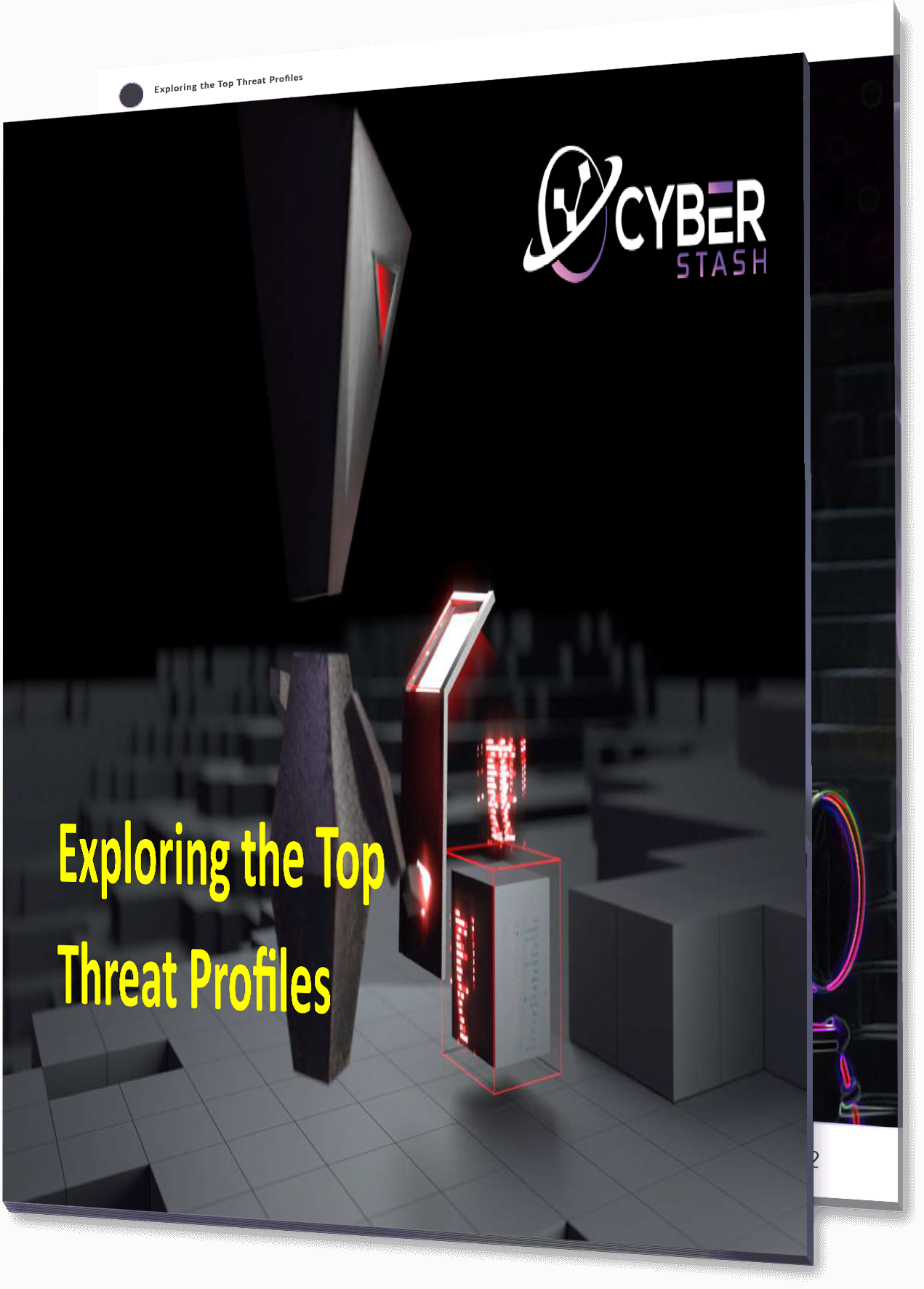Whitepapers

AI's Evolution Redefining Security Analyst Roles for Tomorrow
Artificial intelligence (AI) stands at the forefront of this evolution, poised to revolutionize the role of security analysts. This paper explores the journey from augmentation to autonomy, as AI transforms traditional security analyst functions. Through advanced algorithms and machine learning, AI augments human capabilities, enabling faster threat detection and response. Moreover, AI-driven autonomous systems are on the horizon, promising to reshape security operations entirely. By embracing AI, security analysts can adapt to the changing landscape, enhancing their effectiveness and resilience in combating cyber threats. Join us as we delve into the future of security analysis, where AI is not just a tool but a transformative force.

APTs
In today’s digital battleground, the relentless surge of cyber threats has transformed cybersecurity into a relentless arms race. The cost of cyber risk management is soaring, and organisations grapple with the challenge of measuring success and failure in an uncertain landscape. This whitepaper delves deep into the escalating costs, explores the enigma of the unknown, and prioritises the essence of assurance. We emphasise the critical role assurance plays in building trust, mitigating risk, and proactively safeguarding digital assets.
This whitepaper is a comprehensive guide to understanding and implementing a holistic approach to cyber assurance. It begins by examining the rising costs of cyber risk management, delving into the elements contributing to this ascent and the deeper forces driving it. The whitepaper also dissects the challenges of justifying cybersecurity spending when faced with the unknowns of cyber threats.
As we navigate this cyber labyrinth, we unveil the importance of a comprehensive array of Assurance Services. From periodic penetration testing and compromise assessments to code review, supply chain security, and real-world incident management testing, these services provide a holistic shield against digital threats. We no longer react to threats; we actively protect, defend, and ensure our digital resilience.
This is the age of cyber assurance, a pivotal strategy in our quest for a safer, more resilient digital future. The time has come to embrace this approach as the cornerstone of comprehensive cybersecurity, promising peace of mind in an ever-evolving digital landscape.
In summary, this whitepaper offers insights into the challenges and evolving dynamics of cybersecurity in the digital age. It underscores the vital importance of assurance services, emphasising their role in building trust, mitigating risks, and proactively safeguarding digital assets. Whether you’re seeking to understand the cybersecurity landscape or looking for a practical roadmap to bolster your organisation’s resilience, this whitepaper provides the knowledge and strategies needed to thrive in the digital frontier.

Cybersecurity with Threat Detection and Hunting
The intricate world of enterprise cybersecurity, the differentiation between threat detection and threat hunting is essential to a comprehensive defence strategy. These two concepts are often used interchangeably but entail distinct approaches and objectives. The paramount consideration lies in recognising the synergistic interplay between threat detection’s agility in promptly identifying and mitigating threats with established footprints and threat hunting’s prowess in unveiling nascent, cryptic, or hitherto uncharted threats. In harmonising these distinct paradigms, an enterprise can hope to fortify its cyber resiliency amidst the ceaseless evolution of the threat landscape.

Defending Against Ransomware Attacks - A Comprehensive Guide for CISOs
Ransomware has rapidly evolved into one of the most significant cybersecurity threats facing enterprises today. Characterized by the malicious encryption of data and systems, followed by a demand for ransom in exchange for decryption keys, ransomware attacks can cripple an organization’s operations, disrupt critical services, and result in substantial financial and reputational damage. For Chief Information Security Officers (CISOs), the challenge lies not only in preventing such attacks but also in ensuring a robust response and recovery strategy is in place to mitigate their impact.
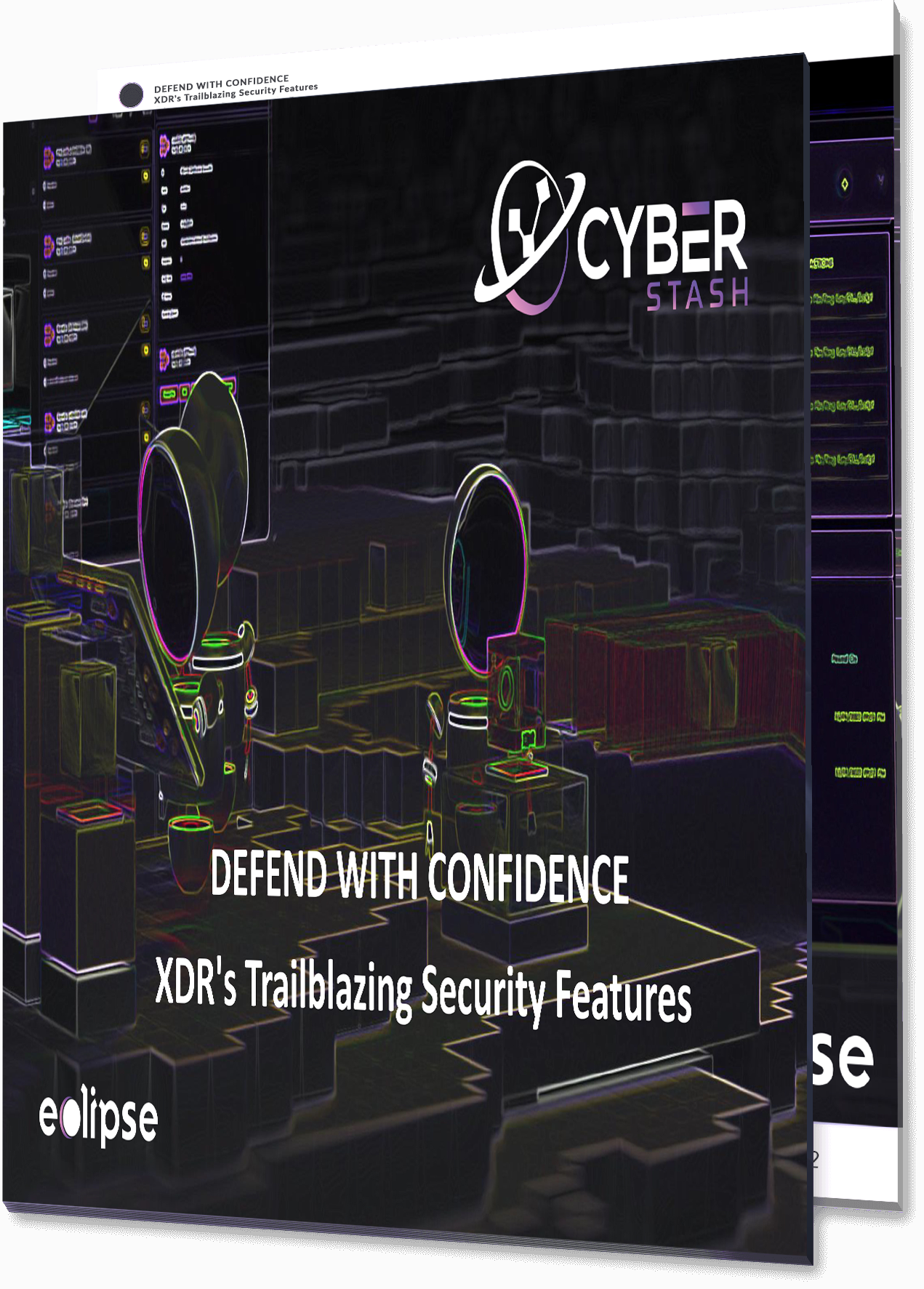
Defend with Confidence XDR's Trailblazing Security Features
In the ever-evolving landscape of cybersecurity, organizations face a relentless onslaught of sophisticated threats that demand proactive and integrated defense mechanisms. Extended Detection and Response (XDR) emerges as a transformative solution, encompassing advanced detection, comprehensive investigation, and swift response capabilities within a unified framework. Unlike traditional single-point technologies such as Security Information and Event Management (SIEM), Endpoint Detection and Response (EDR), Security Orchestration, Automation, and Response (SOAR), or Threat Intelligence (TI) platforms, XDR leverages interconnected and holistic data sources across endpoints, networks, and cloud environments.
In essence, XDR’s extended capabilities transcend the limitations of single-point technologies by offering a unified, context-aware, and automated approach to cybersecurity. By integrating diverse data sources, automating response actions, and leveraging advanced analytics, XDR empowers organizations to proactively detect, investigate, and mitigate threats across their entire digital ecosystem.
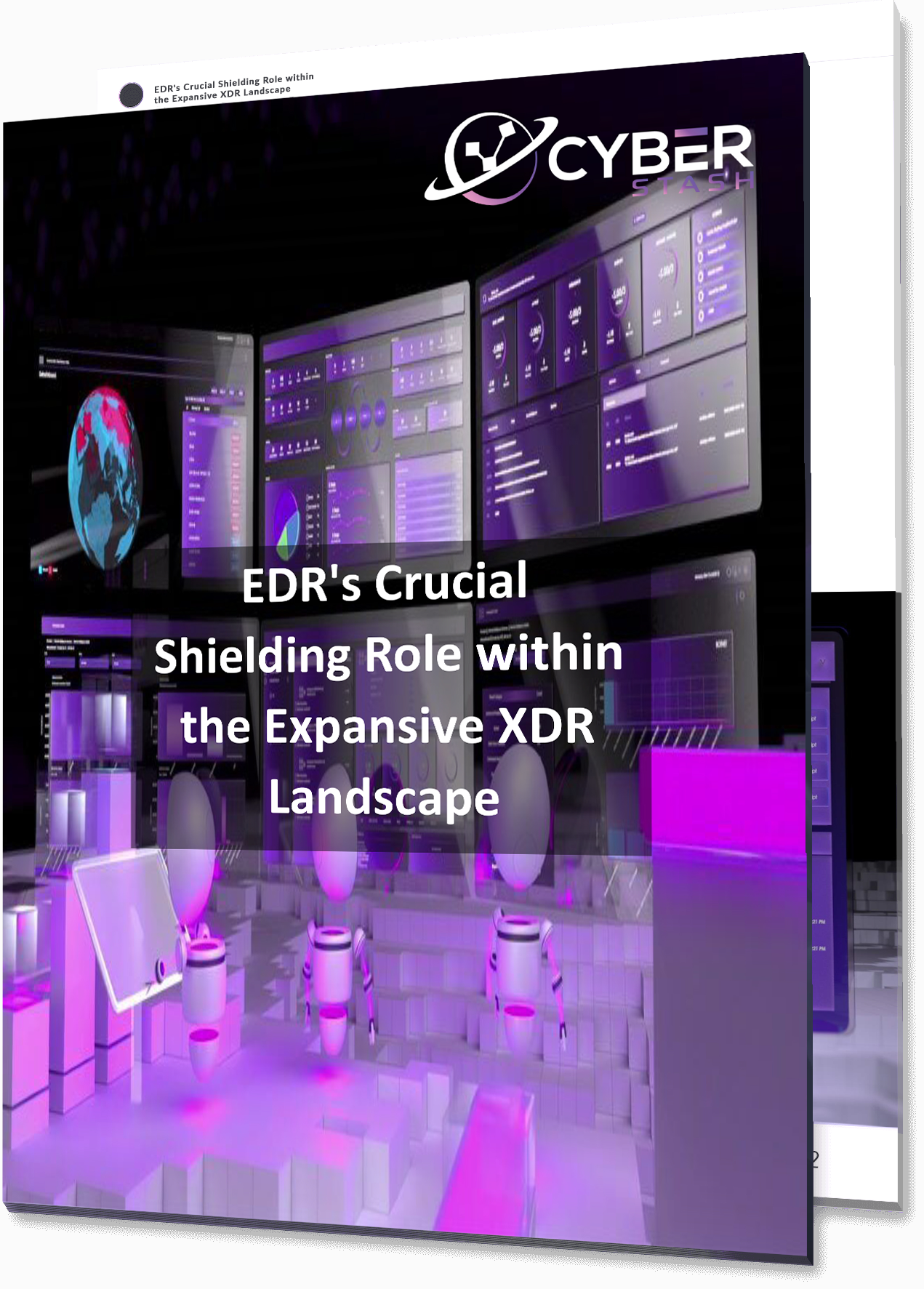
EDR's Crucial Shielding Role within the Expansive XDR Landscape
In an era defined by relentless digital transformation, cybersecurity’s landscape witnesses an escalating array of threats. The role of Endpoint Detection and Response (EDR) within the expansive framework of Extended Detection and Response (XDR) stands as a testament to resilience. This whitepaper embarks on an odyssey through the intricate mase of digital defenses, unravelling the pivotal role of EDR as the vigilant guardian within the expanse of XDR.
Delving into the very fabric of cybersecurity orchestration, this exploration magnifies the significance of EDR’s autonomy from Endpoint Protection Platforms (EPP). As custodian stationed at the endpoint’s forefront, EDR’s independence emerges as paramount. It weaves an intricate dance of detection, response, and recovery, unfettered by the constraints of EPP, to ensure unwavering vigilance against multifaceted threats.
Furthermore, this narrative advocates for the imperative of preserving EDR’s distinct domain within the XDR landscape. The delineation of roles becomes imperative—where EPP embodies proactive preventive measures, EDR stands as the steadfast defender post-breach. The paper illuminates how this demarcation fosters an ecosystem wherein EDR’s agility in breach validation, adversary behavior detection, and swift response actions remains unclouded by the intricacies of EPP.
As enterprises navigate the treacherous waters of cyber adversities, this discourse champions the independence of EDR as a strategic imperative. It underscores the crucial need to maintain the delineation between EDR and EPP, fostering a symbiotic relationship that empowers EDR to function as an autonomous capability within the XDR fabric. In the convergence of proactive prevention and post-breach resilience, EDR’s autonomy emerges as the linchpin fortifying the digital citadel against the ceaseless waves of cyber threats.

Empowering Enterprise Cybersecurity - The Strategic Imperative of Integrated Cyber Threat Intelligence Programs
In an era defined by persistent and evolving cyber threats, organizations face an imperative to fortify their cybersecurity postures through proactive defense strategies. Cyber threat intelligence (CTI) programs play a pivotal role in this endeavour, enabling enterprises to enhance their resilience across five critical domains: real-time defensive controls, global surveillance of emerging threats, centralized management platforms, enhanced threat detection and hunting, and integrated security architectures. This article explores how integrated CTI programs empower organizations to mitigate risks effectively, optimize resource allocation, and navigate the dynamic cyber landscape with confidence. By leveraging advanced technologies and strategic insights, enterprises can proactively defend against sophisticated cyber adversaries, safeguard critical assets, and uphold trust in an interconnected digital ecosystem.
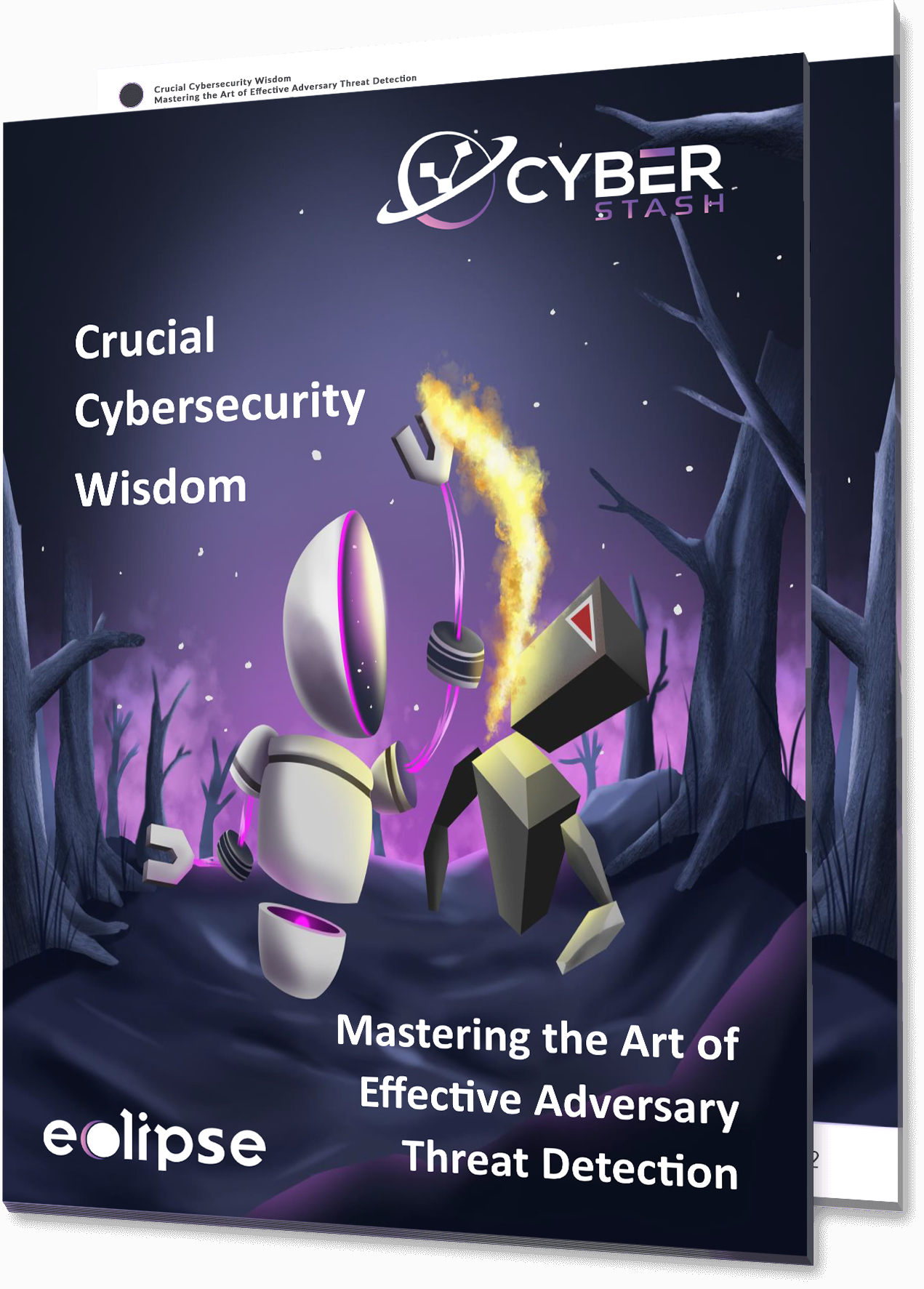
Mastering the Art of Effective Adversary Threat Detection
The realm of cybersecurity is in a state of perpetual flux. The adversaries we face continually adapt and evolve, employing increasingly sophisticated tactics to breach our digital fortresses. In response, defenders must also evolve, embracing a paradigm shift in threat detection.
This whitepaper challenges conventional wisdom, presenting a strategic framework that empowers organisations to fortify their defenses while optimising their resources.
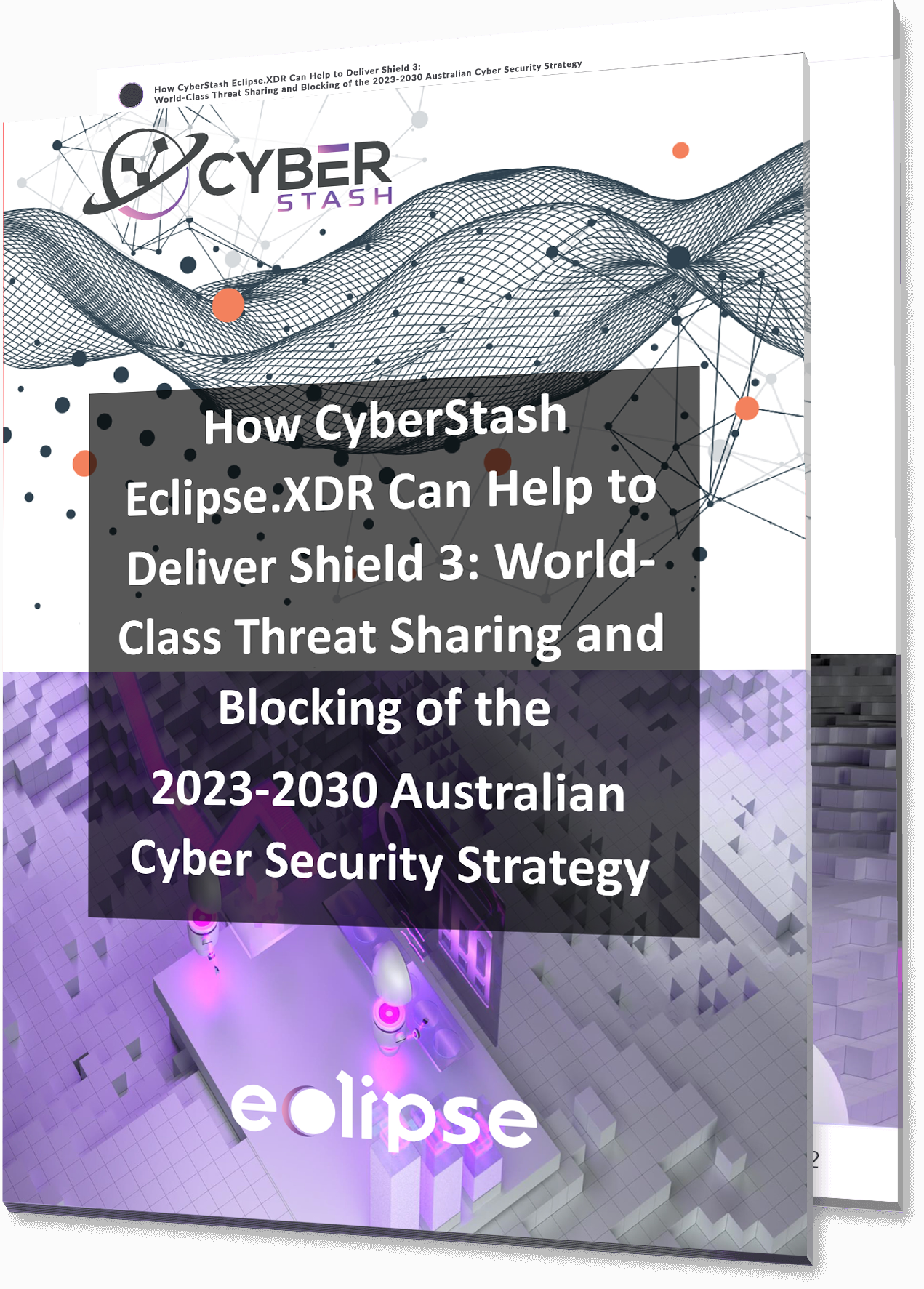
How CyberStash Exclipse.XDR Delivers Shield 3 of the 2023-2030 Australian Cyber Security Strategy
The Australian Government remains steadfast in its commitment to establishing Australia as a leading authority in global cybersecurity by 2030. The success of the 2023–2030 Australian Cyber Security Strategy hinges significantly on the execution of its actionable plans. To achieve this, the Government is actively addressing critical gaps across 6 cyber-Shields, encapsulating 20 Action Plans.
In pursuit of global cybersecurity leadership by 2030, the Australian Government emphasises the cultivation of genuine partnerships, the development of lasting solutions, and continued collaboration within the industry. Within the dynamic landscape of cybersecurity, CyberStash unveils a pivotal asset in its arsenal, the Eclipse.XDR Cyber Defence Platform, tailored to meet Shield 3 imperatives outlined in the 2023-2030 Australian Cyber Security Strategy. This whitepaper meticulously dissects how Eclipse.XDR seamlessly integrates with Shield 3, explaining its role in realising the strategic objectives outlined in Action 11 and Action 12.
Shield 3, heralding world-class threat sharing and blocking, becomes a focal point of CyberStash’s Eclipse.XDR capabilities. Within Action 11, the strategy emphasises the pivotal role of strategic threat intelligence dissemination across sectors. This initiative fosters collaboration between government and industry through the Government’s newly formed Executive Cyber Council, entrusted with the responsibility of transparent co-leadership on critical cyber security issues. Eclipse.XDR embodies this strategic vision by facilitating seamless machine-to-machine exchange of cyber threat intelligence. CyberStash’s Eclipse.XDR is strategically positioned to bolster the strategy by facilitating the establishment and fortification of Information Sharing and Analysis Centres (ISACs) across sectors. CyberStash already has government agencies utilising the platform in ways aligned with the strategy’s envisioned objectives. These ongoing implementations serve as live examples of how Eclipse.XDR can effectively function within the context outlined by the strategy. These real-world implementations offer insights that we can replicate and tailor to support the government’s pilot initiatives, especially within the health industry.
In parallel, Action 12 accentuates the necessity to scale threat blocking capabilities to fortify against cyber-attacks. CyberStash’s Eclipse.XDR spearheads this mission by collaborating with industry partners to pioneer cutting-edge threat blocking capabilities. Within our ongoing Partnership Program, Eclipse.XDR takes the lead in operationalising automated, real-time threat blocking functionalities seamlessly integrated with current government and industry threat sharing platforms. Additionally, Eclipse.XDR champions the expansion of threat blocking capabilities, incentivising, and encouraging entities such as telecommunication providers, ISPs, and financial services to fortify their defenses against evolving threats.
This whitepaper is an indispensable guide designed for the Government’s Executive Cyber Council, as well as CIOs, CISOs, and Cybersecurity Managers within governmental and corporate sectors. It meticulously outlines how CyberStash’s Eclipse.XDR stands as an essential solution, perfectly aligned with the mandates of the Australian Cyber Security Strategy. Through the utilisation of Eclipse.XDR, stakeholders are empowered to bolster their cybersecurity infrastructure, cultivating resilience in an ever-evolving landscape of cyber threats.

Leveraging Threat Intelligence for Enhanced Cyber Resilience
In today’s dynamic cyber landscape, the role of Chief Information Security Officers (CISOs) and Cyber Security Managers is evolving rapidly. They face the perpetual challenge of safeguarding organizational assets from an increasingly sophisticated array of cyber threats. This whitepaper delves into the strategic use of threat intelligence to bolster defenses, focusing particularly on the proactive blocking of traffic from high-risk Top Level Domains (TLDs), countries, and Autonomous System Numbers (ASNs). By harnessing threat intelligence effectively, organizations can not only reduce exposure but also enhance resilience and fortify trust in their IT environments.
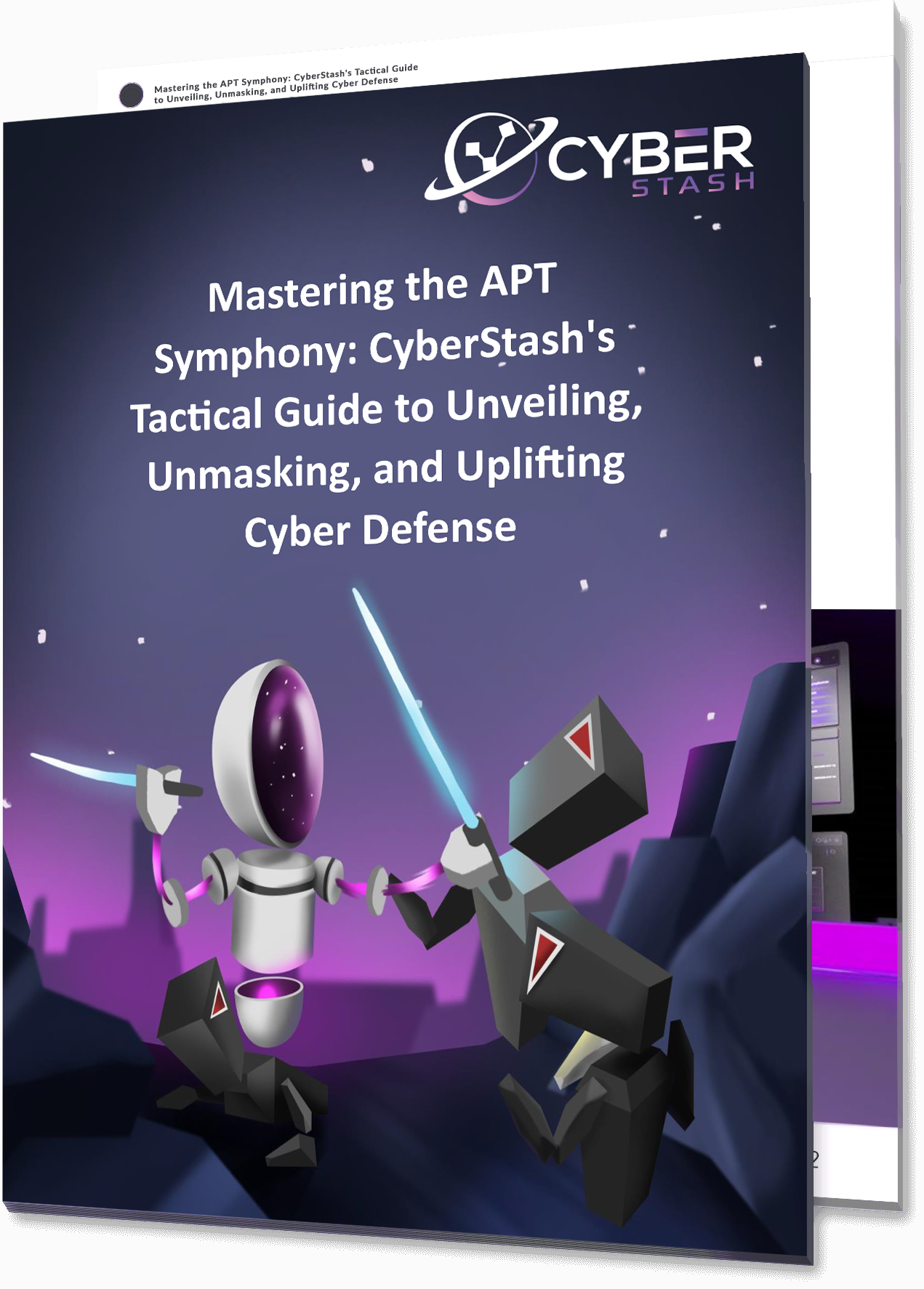
Mastering the APT Symphony
In the intricate dance between defenders and the ever-evolving landscape of cyber threats, the spectre of Advanced Persistent Threats (APTs) looms large. As we traverse the digital frontier, the cyber battleground is marked not only by the known adversaries, meticulously mimicking established tactics, but also by the elusive and unpredictable Undiscovered APTs, charting uncharted territories with novel techniques.
This exploration into the diverse manifestations of APTs is guided by the insightful classifications of Mirror APTs, Deceptive APTs, and Undiscovered APTs, as defined by the visionary perspective of CyberStash. Each category, though distinct in its approach, underscores the relentless adaptability of threat actors, posing unique challenges that demand equally innovative defence strategies.
The saga unfolds with Mirror APTs, whereby stolen identities cloak malevolent intentions. A careful examination of Tactics, Techniques, and Procedures (TTPs) becomes paramount, as defenders navigate the shadows cast by imposter APT groups. Deceptive APTs emerge as artists of concealment, combining the familiar with the unknown, all while retaining the indelible human touch. This calls for an intricate dance of behavioural analysis and psychological profiling, recognising the inevitability of human error as a linchpin in defence.
In the realm of Undiscovered APTs, we find ourselves in uncharted waters, where attack types remain concealed, and the human operators embark on a journey of unprecedented innovation. Detecting and defending against the unknown requires a symphony of strategies, from malware and infrastructure analysis to understanding motivation, targets, and the dynamics of the attack. The effort invested in crafting such attacks unveils a spectrum that may signify state-sponsored endeavours, demanding a heightened level of vigilance.
As we embark on this exploration into the unseen tides of APTs, our defence strategies must evolve, incorporating threat intelligence platforms, continuous threat hunting, and a deep dive into frameworks like MITRE ATT&CK. By deciphering the intent, unravelling the human nuances, and adapting defence mechanisms, organisations can transform the unpredictability of APTs into an opportunity for proactive resilience.
In this ever-shifting digital landscape, CyberStash emerges as a beacon, offering strategic insights and tactical threat intelligence. By significantly reducing exposure to malicious infrastructure, CyberStash stands at the forefront of defence, equipping organisations with the knowledge and tools to navigate the unseen tides of APTs. The journey unfolds with the recognition that, in the face of the unknown, our collective understanding and adaptive defence strategies will determine our triumph against the evolving threat landscape.
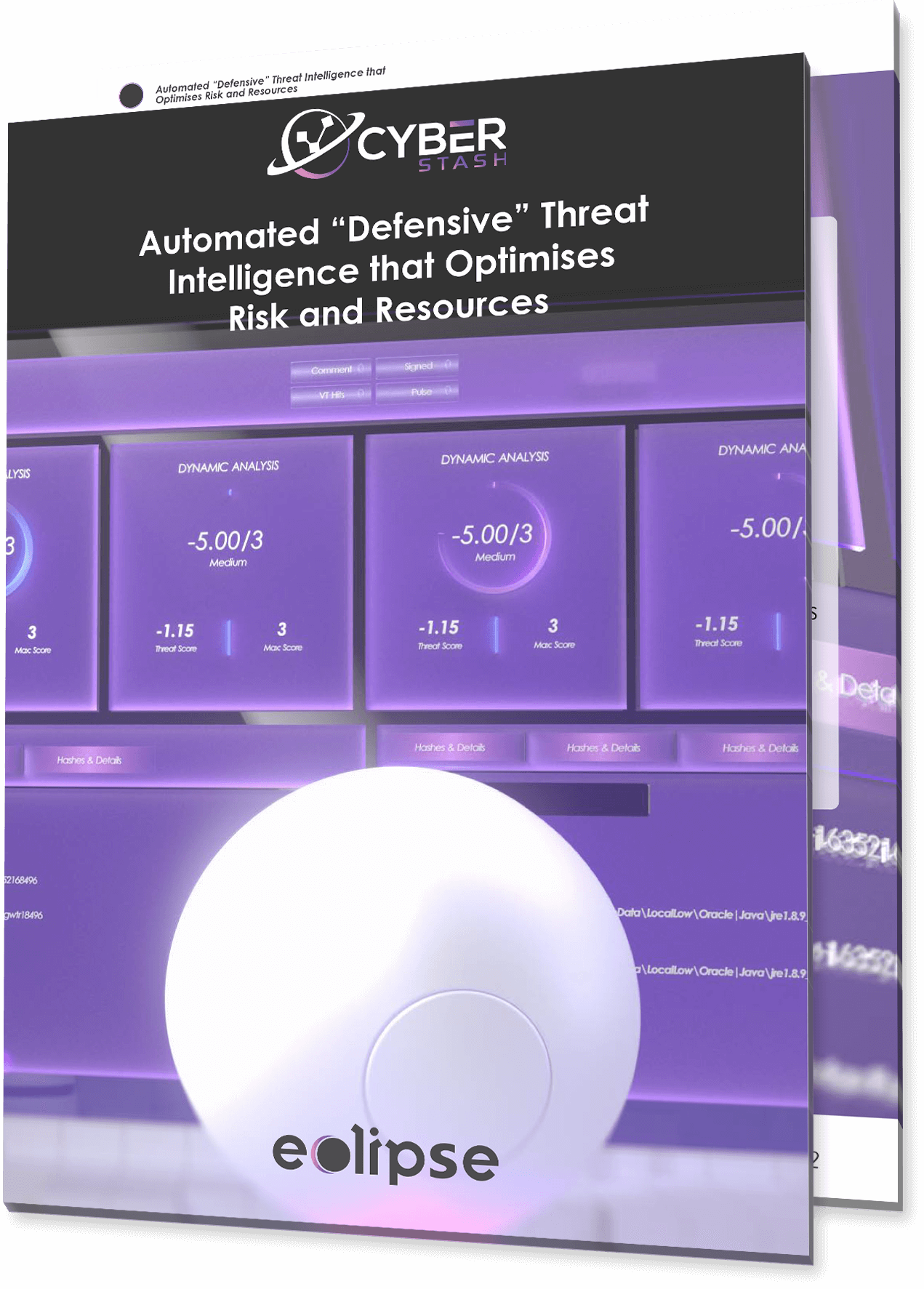
Automated “Defensive” Threat Intelligence that Optimizes Risk and Resources
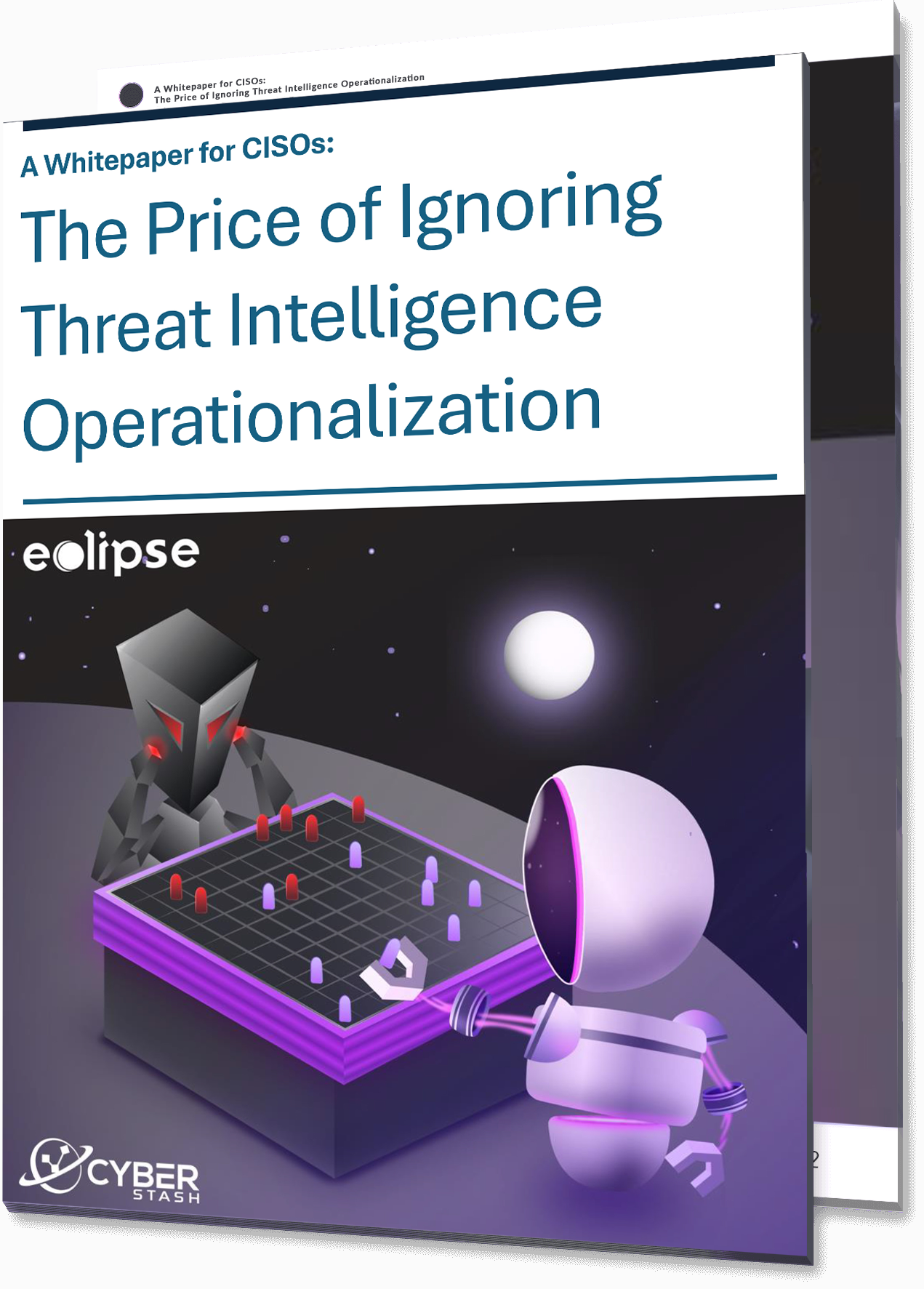
The Price of Ignoring Threat Intelligence Operationalization
In the ever-evolving landscape of cybersecurity, where the adversaries are not only numerous but also increasingly sophisticated, the strategic utilization of Cyber Threat Intelligence (CTI) stands as an indispensable pillar of defense for organizations worldwide. With projections indicating a meteoric rise in the global threat intelligence market, from $5.80 billion in 2024 to a staggering $24.85 billion by 2032(1), it is evident that the recognition of CTI’s value is not merely conjecture but a tangible reality driving substantial investment and attention.
This exponential growth, forecasted at a Compound Annual Growth Rate (CAGR) of 20.0%(1), underscores the escalating demand for solutions that provide proactive insights into the ever-shifting threat landscape. It reflects an industry-wide acknowledgment that the traditional reactive approaches to cybersecurity are no longer sufficient in mitigating the multifaceted risks posed by cyber threats. In this era where the digital realm serves as both battleground and marketplace, the imperative to stay ahead of adversaries has never been more pressing.
However, while the market size serves as a compelling indicator of the perceived value of CTI, its true significance extends far beyond the realm of financial metrics. Beyond the monetary investments lie the intrinsic benefits that CTI bestows upon organizations courageous enough to embrace its potential fully. From empowering proactive threat mitigation strategies to facilitating informed decision-making processes, the value proposition of CTI transcends mere cost analysis, embodying a strategic imperative in the modern cybersecurity paradigm.
As we delve deeper into the intricate web of operationalizing threat intelligence, it becomes imperative to not only comprehend the market dynamics but also dissect the underlying challenges and opportunities inherent in harnessing this invaluable resource. Thus, the journey ahead beckons us to explore not only the tangible costs of implementing a CTI program but also the intangible yet profound ramifications of neglecting to do so. For in the relentless pursuit of cybersecurity resilience, the cost of inaction may far outweigh the investments required to embrace the transformative power of threat intelligence.
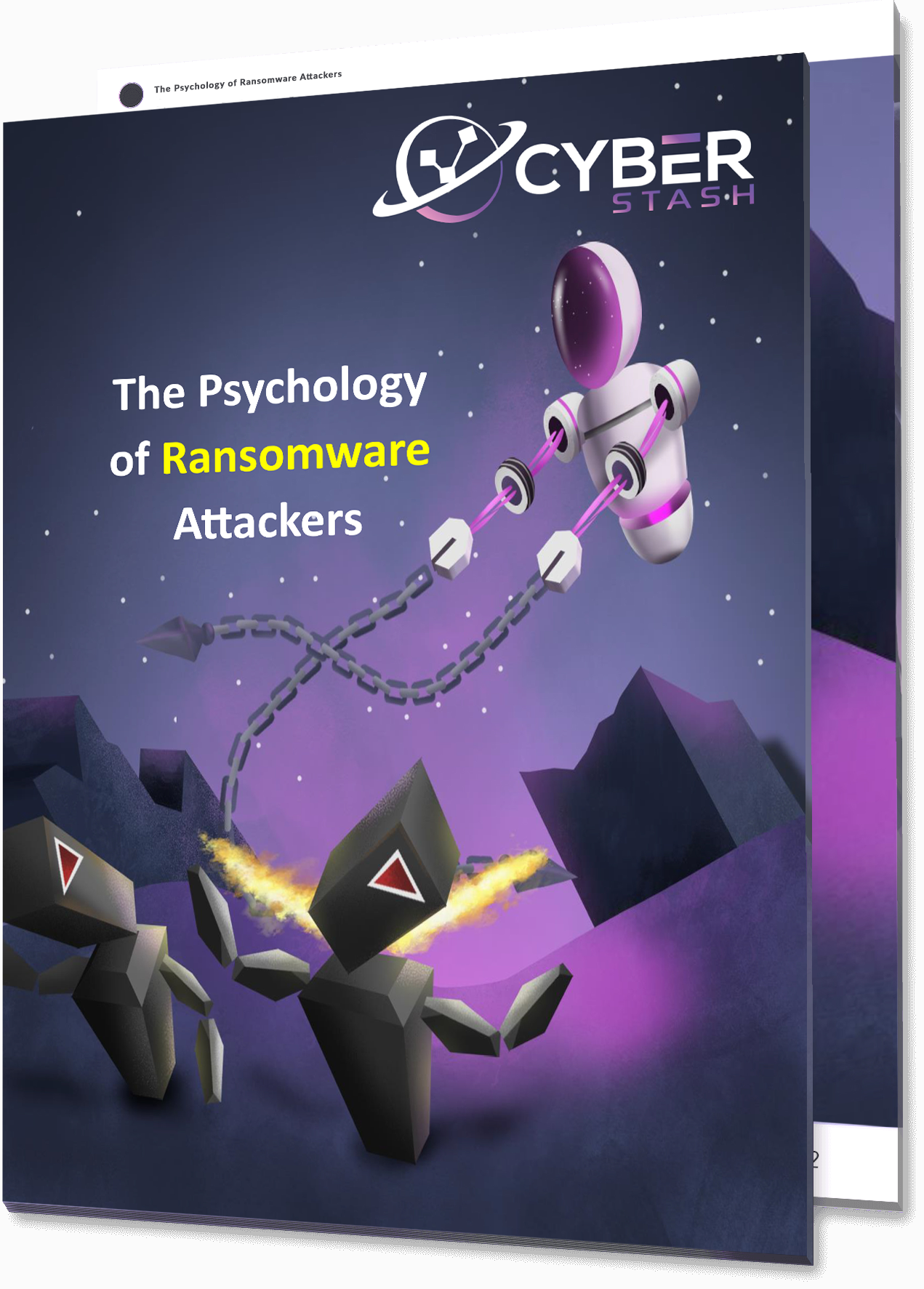
The Psychology of Ransomware Attackers
In the digital age, ransomware attacks have emerged as a pervasive threat, driven by a complex interplay of psychological, economic, and geopolitical factors. This document delves into the motivations, tactics, and psychological profiles of ransomware attackers, shedding light on their quest for financial gain, power, and control. From impoverished state actors to well-funded APT groups, attackers exploit vulnerabilities in security infrastructure, leveraging technology as a tool for digital extortion. Psychological traits such as impulsivity, narcissism, and a lack of empathy characterize ransomware attackers, predisposing them to engage in cybercrime as a means of gratifying their ego and achieving financial gain. Despite the inherent risks, attackers meticulously weigh the potential gains against the likelihood of detection and punishment, employing tactics to minimize their risk of being caught. Proactive measures such as robust cybersecurity protocols and heightened awareness are essential in combating the scourge of ransomware attacks and safeguarding against their destructive impact on individuals, organizations, and society.

Unveiling the Cybersecurity Paradox
In today’s digital battleground, the relentless surge of cyber threats has transformed cybersecurity into a relentless arms race. The cost of cyber risk management is soaring, and organisations grapple with the challenge of measuring success and failure in an uncertain landscape. This whitepaper delves deep into the escalating costs, explores the enigma of the unknown, and prioritises the essence of assurance. We emphasise the critical role assurance plays in building trust, mitigating risk, and proactively safeguarding digital assets.
This whitepaper is a comprehensive guide to understanding and implementing a holistic approach to cyber assurance. It begins by examining the rising costs of cyber risk management, delving into the elements contributing to this ascent and the deeper forces driving it. The whitepaper also dissects the challenges of justifying cybersecurity spending when faced with the unknowns of cyber threats.
As we navigate this cyber labyrinth, we unveil the importance of a comprehensive array of Assurance Services. From periodic penetration testing and compromise assessments to code review, supply chain security, and real-world incident management testing, these services provide a holistic shield against digital threats. We no longer react to threats; we actively protect, defend, and ensure our digital resilience.
This is the age of cyber assurance, a pivotal strategy in our quest for a safer, more resilient digital future. The time has come to embrace this approach as the cornerstone of comprehensive cybersecurity, promising peace of mind in an ever-evolving digital landscape.
In summary, this whitepaper offers insights into the challenges and evolving dynamics of cybersecurity in the digital age. It underscores the vital importance of assurance services, emphasising their role in building trust, mitigating risks, and proactively safeguarding digital assets. Whether you’re seeking to understand the cybersecurity landscape or looking for a practical roadmap to bolster your organisation’s resilience, this whitepaper provides the knowledge and strategies needed to thrive in the digital frontier.
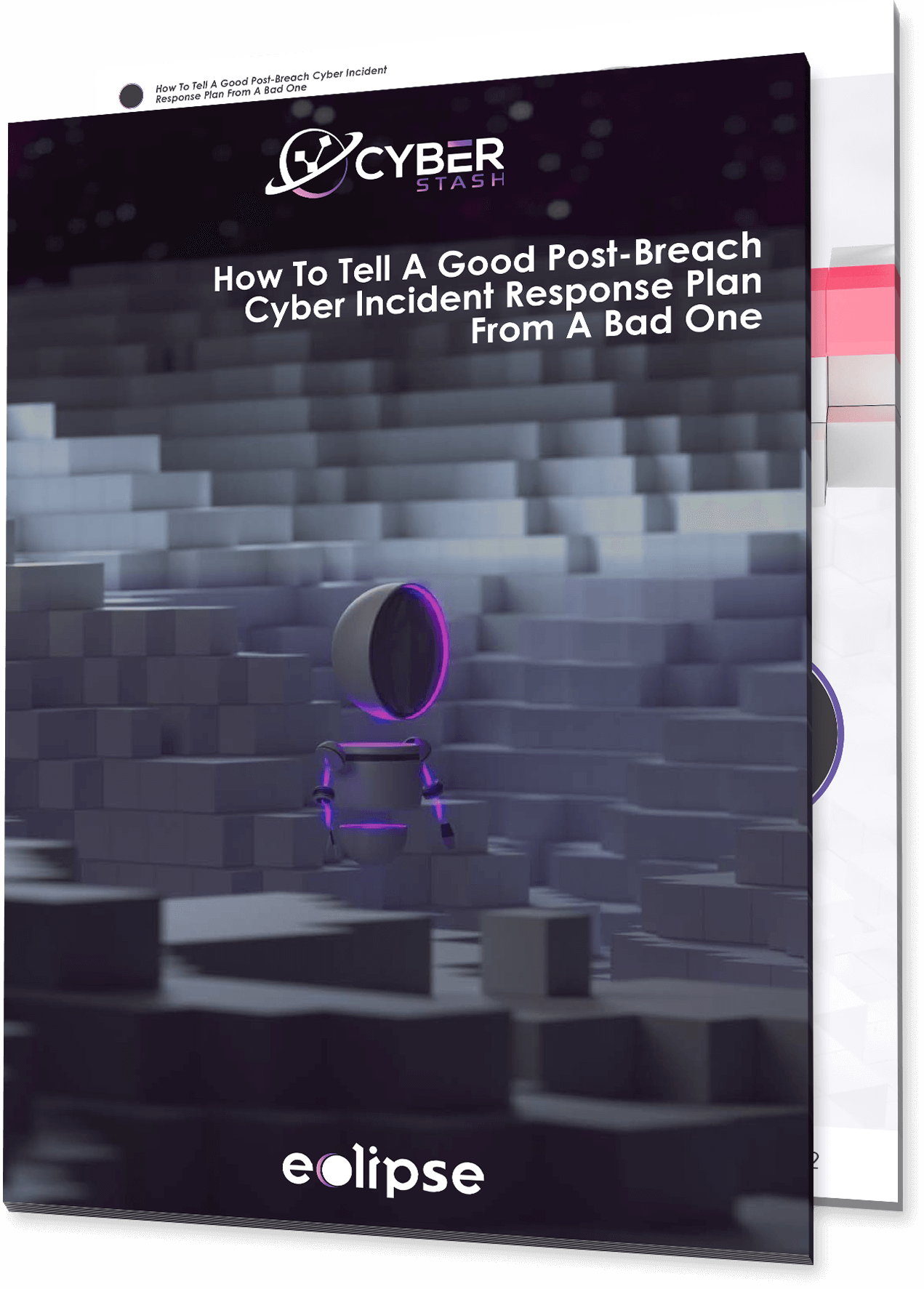
How To Tell A Good Post Breach Cyber Incident Response From A Bad One
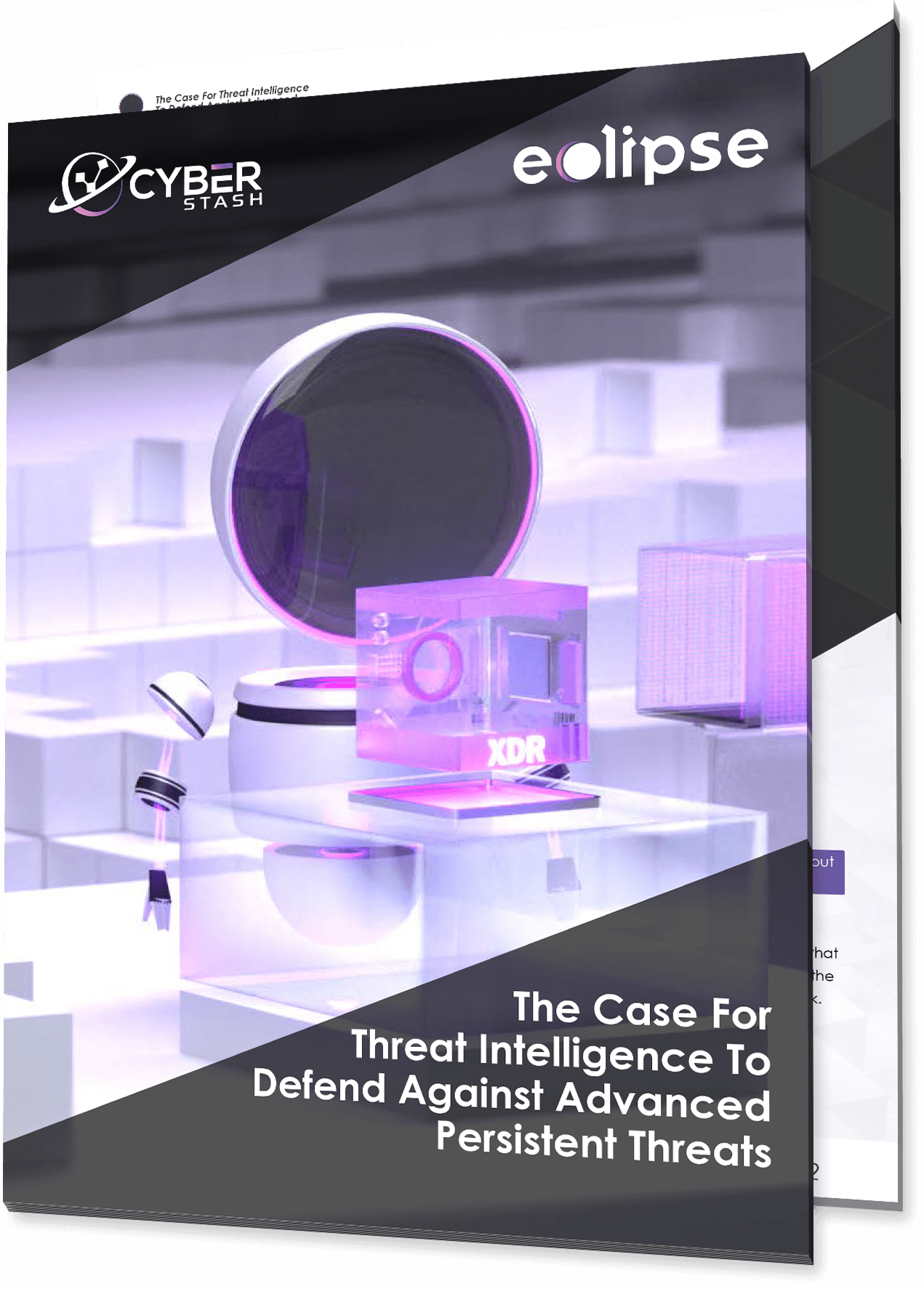
The Case For Threat Intelligence to Defend Against Advanced Persistant Threats
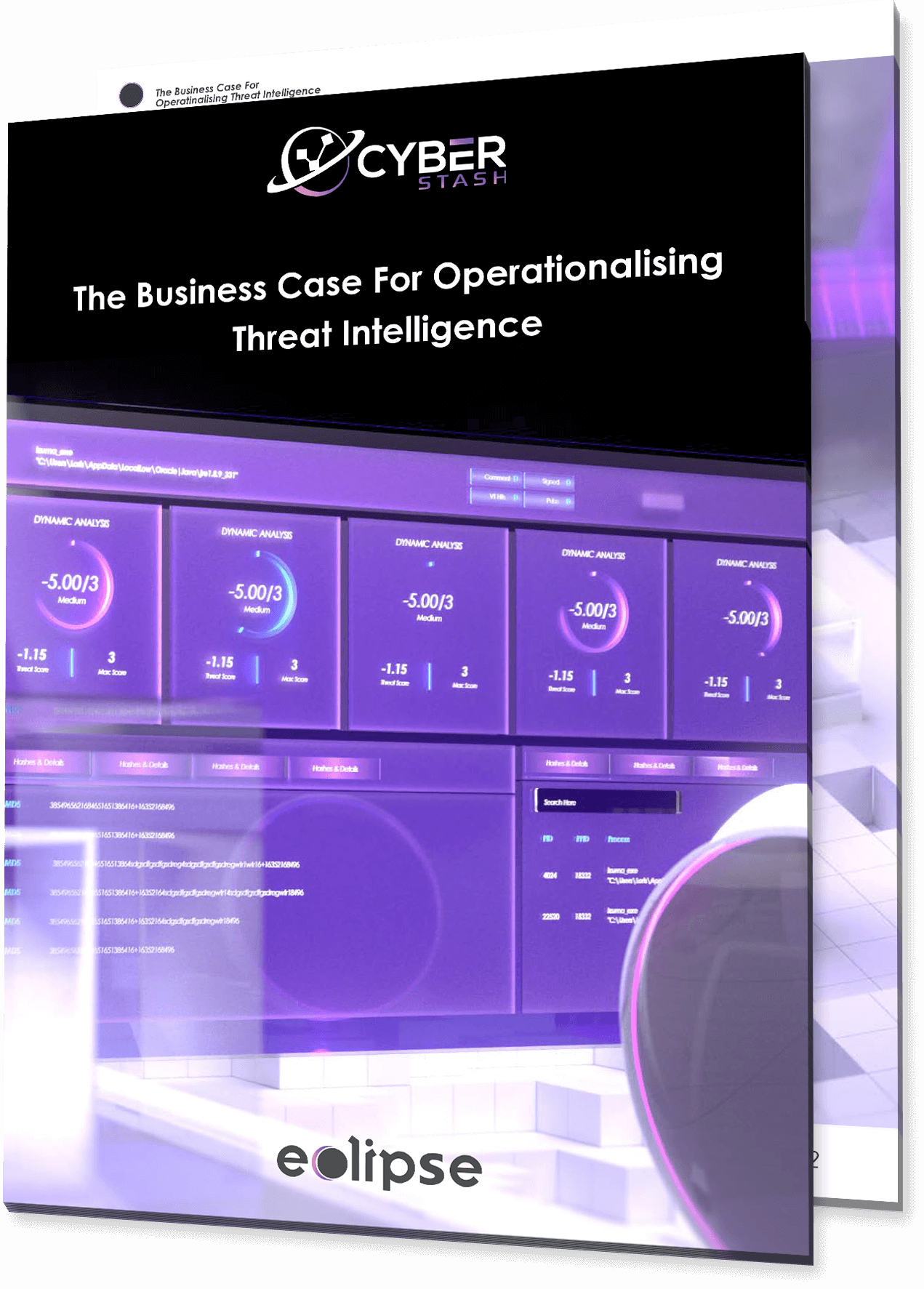
The Business Case for Operationalizing Threat Intelligence
The purpose of this paper is to provide decision makers the information they need to evaluate the potential financial impact of CyberStash Managed Network Detection and Response (NDR) Service powered by its eclipse.xdr platform.
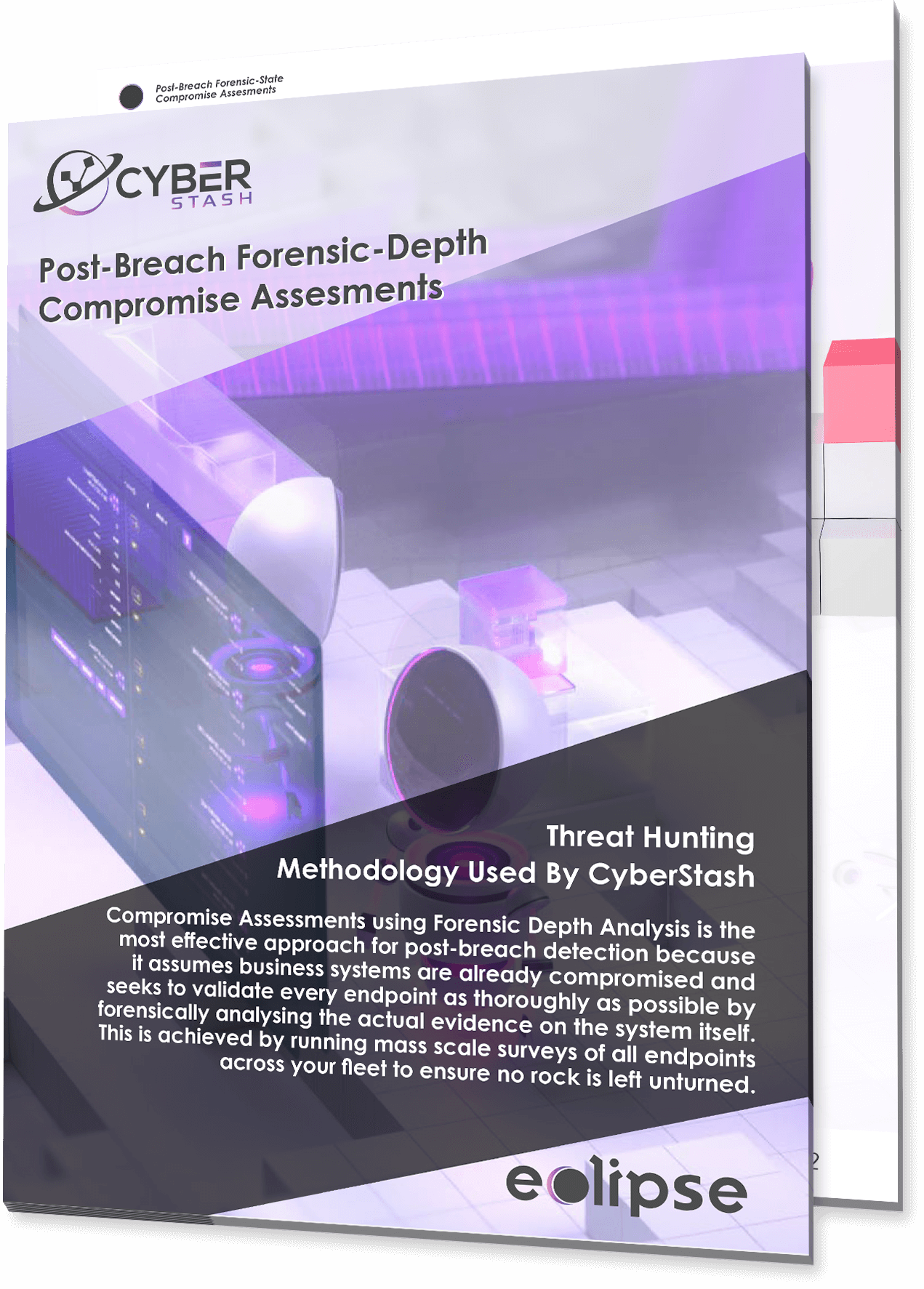
Post Breach Forensic Depth
Compromise Assessments
Even organisations with the most effective
security practices fall victim to advanced
and persistent threats. With
sophistication and elegance, hackers
compromise systems and information while
remaining undetected.
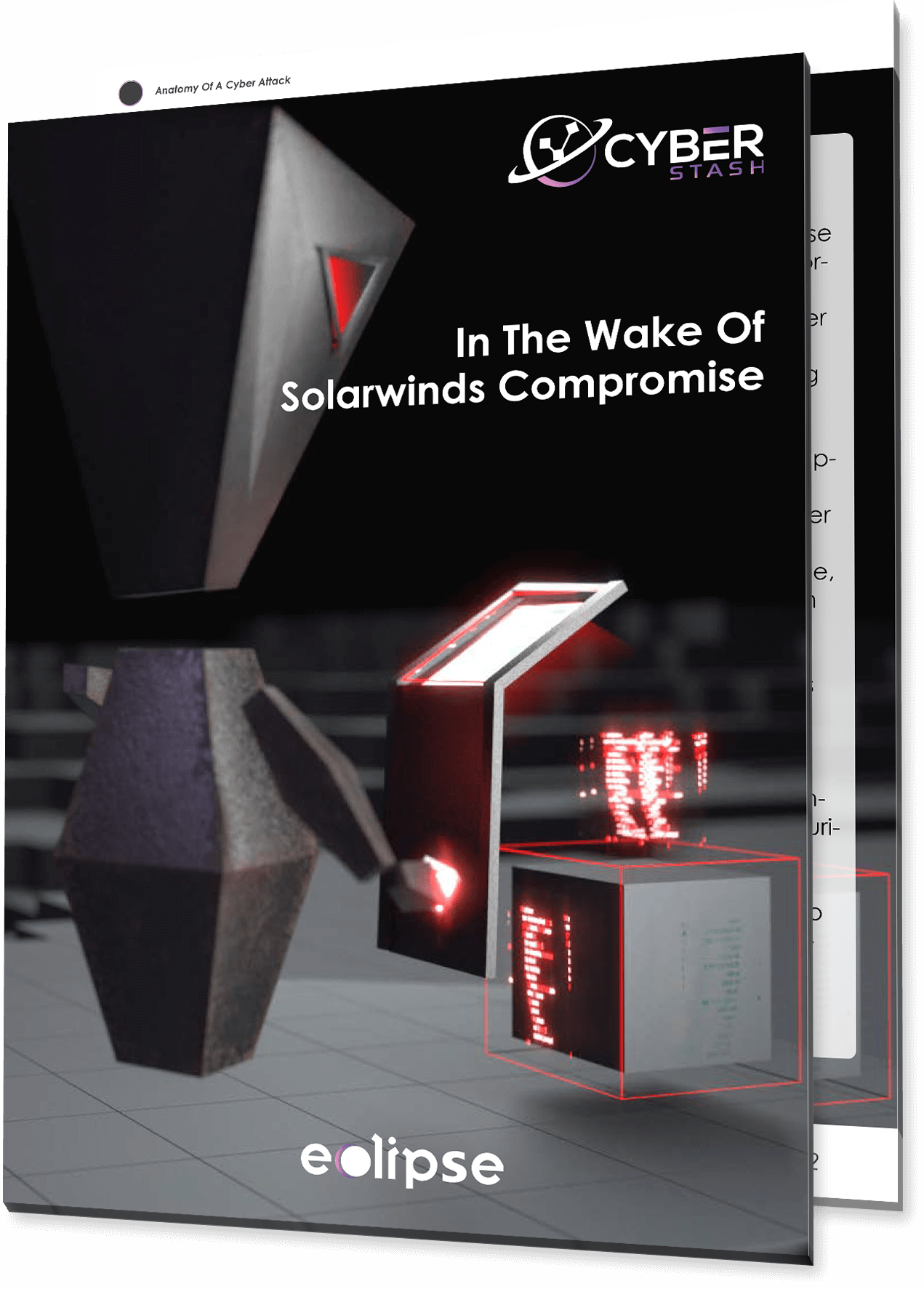
In The Wake Of Solarwinds Compromise
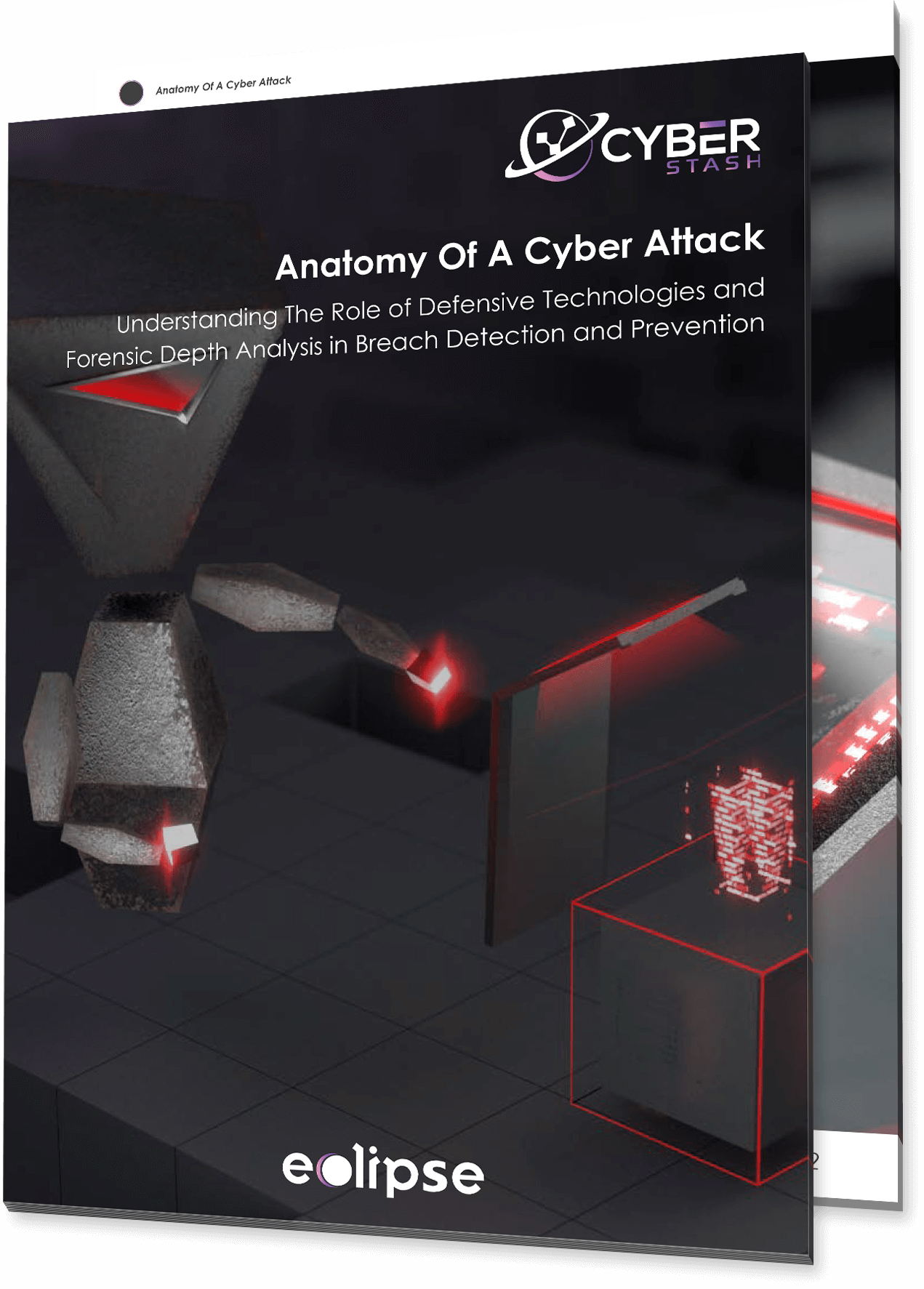
Anatomy of a Cyber Attack
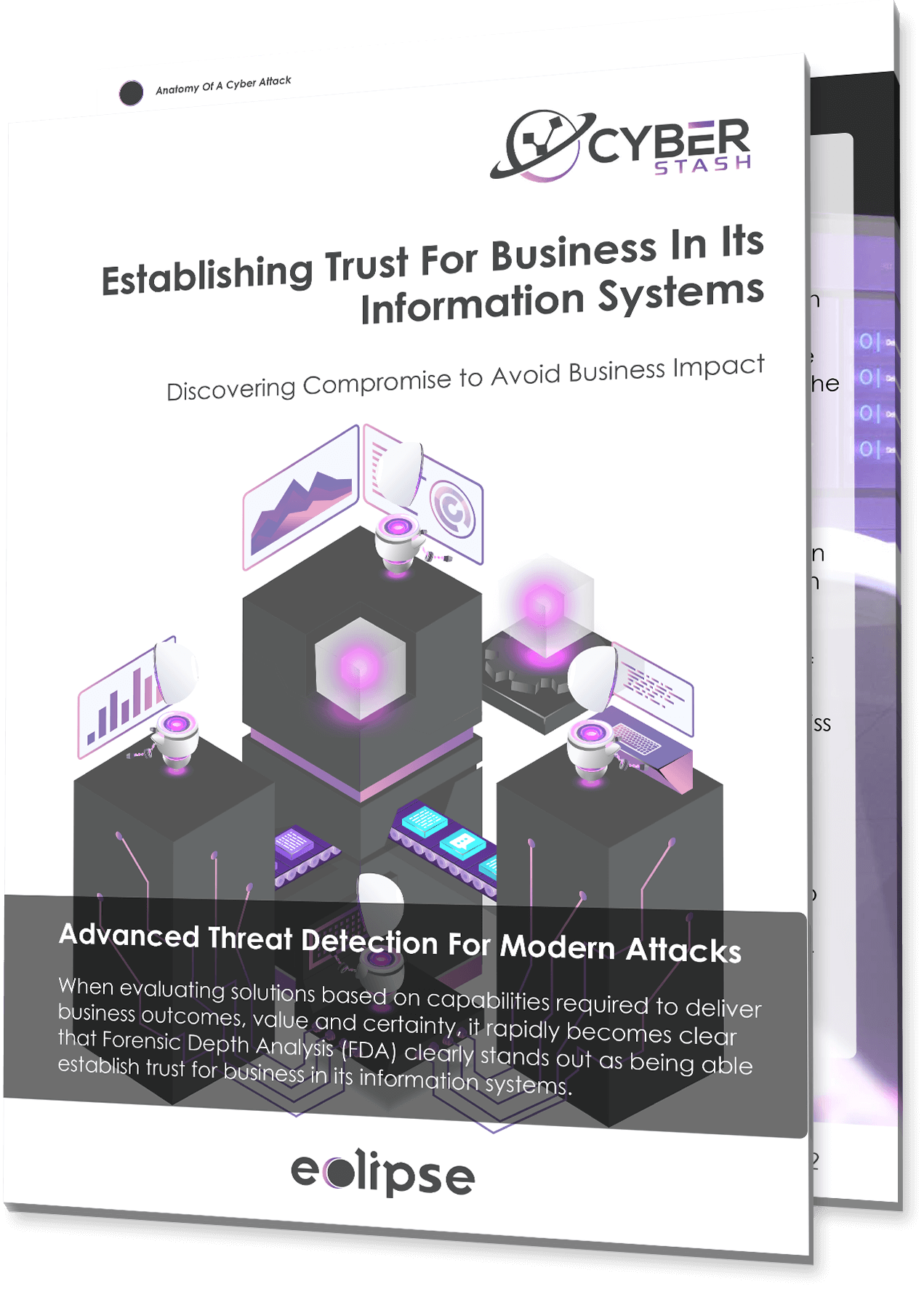
Establishing Trust For Business in its Information Systems
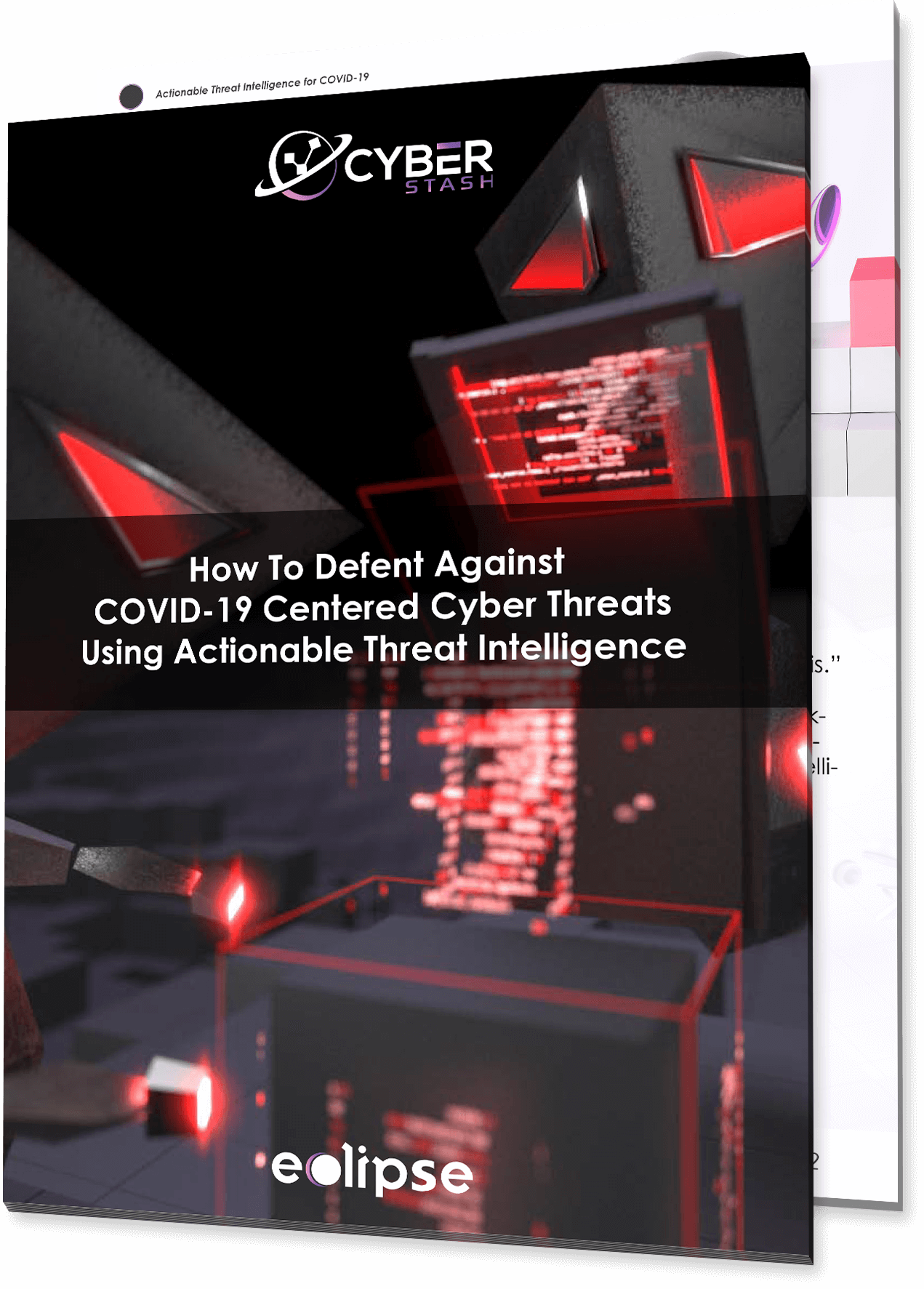
How To Defend Against COVID-19 Centered Cyber Threats Using Actionable Threat Intelligence
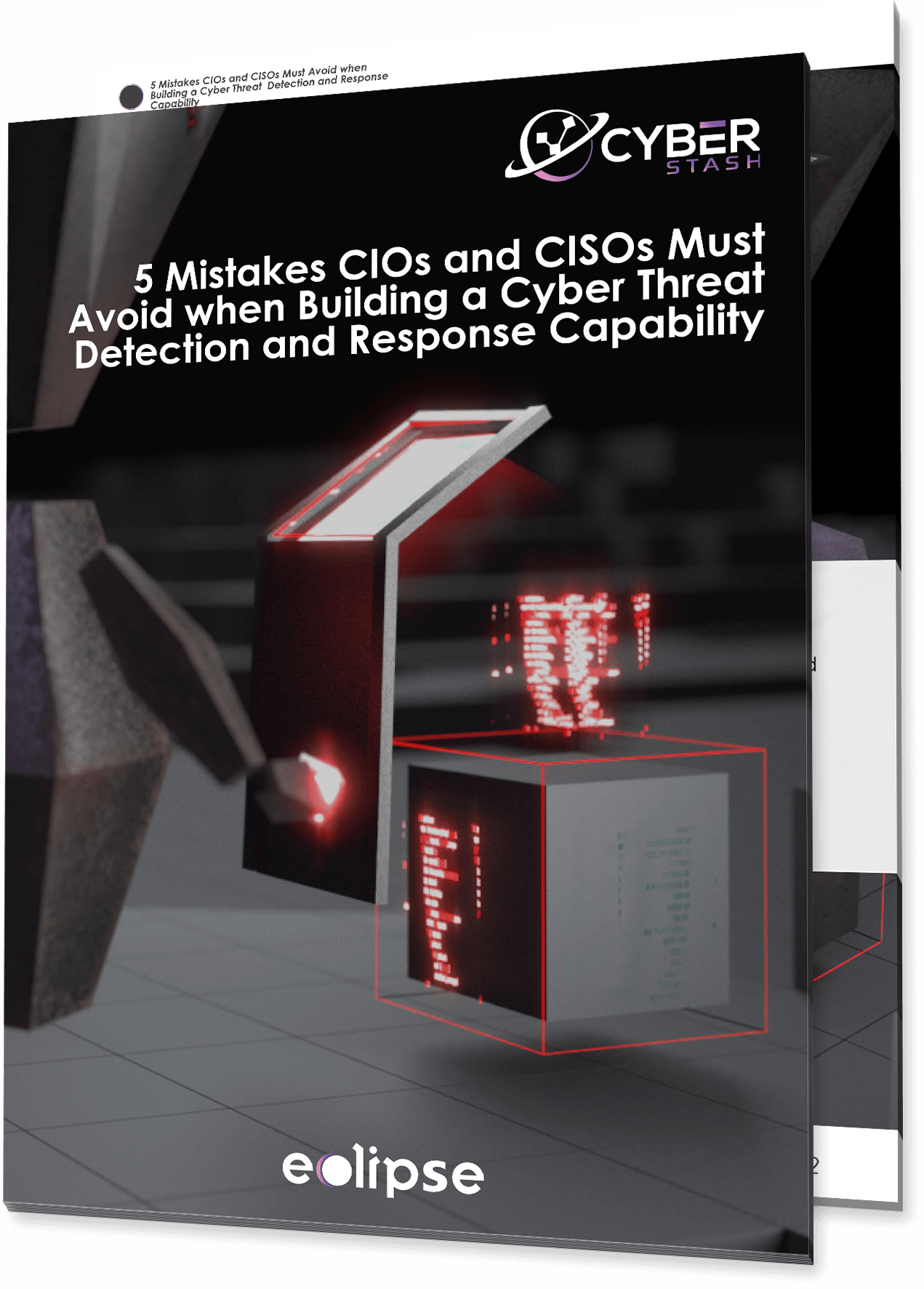
5 Mistakes CIOS And CISOS Must Avoid when Building a Cyber Security Monitoring

Securing Healthcare in Australia
Essential Security Controls
The healthcare sector, including National Disability Insurance Scheme (NDIS) providers, faces significant cybersecurity risks that make it one of the most targeted industries for cyberattacks. The value of sensitive patient data—such as personal identification, health records, and financial information—renders healthcare organizations appealing targets for cybercriminals. High-profile breaches have illustrated that these organizations are often ill-prepared to manage sophisticated cyber threats. This vulnerability arises from various factors, including the complexity of healthcare IT systems, the sensitivity of the data handled, and the increasing sophistication of cybercriminal tactics.
In response to these challenges, a comprehensive set of security controls has been carefully chosen for healthcare and NDIS providers. These controls focus on mitigating risks specific to the sector, addressing both the inherent vulnerabilities in healthcare IT environments and the regulatory requirements governing patient data protection.
